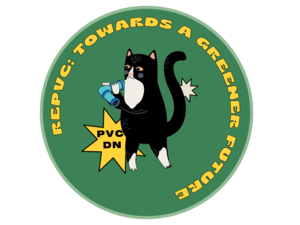
College of Engineering Unit:
PVC constitutes 7% of yearly plastic waste, with increasing amounts expected due to its use in construction for long-lasting products. Current waste management methods include landfill, incineration, and mechanical recycling. Chemical recycling attempts like VinylLoop in Italy used a dissolution process with PVC-specific solvent, but faced closure due to phthalate content. A new catalytic process by Svadlenak et. al. uses a heterogeneous catalyst and hydrogen gas to dechlorinate PVC and produce polyethylene wax. This project aims to scale up the process to an industrial scale, perform economic analysis, and model the polyethylene wax product as linear C40. The EPA estimates 910,000 tons of post-consumer PVC in the US annually, with less than 0.25% recycled. The plant will be designed to process 3200 tons of PVC per year, equivalent to recycling rates of 160 million pounds per year. Experimental data from Svadlenak et. al. includes material balance, reaction kinetics, yield/selectivity/conversions, and heat transfer with wax.
Industry Sponsor(s):
| Attachment | Size |
|---|---|
| 2.95 MB |